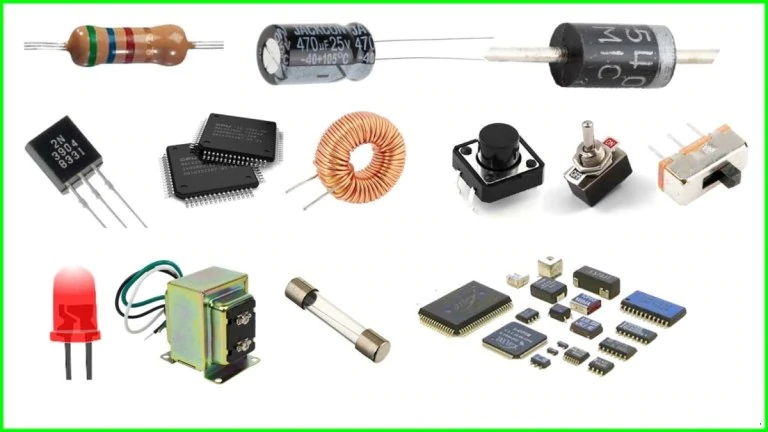In the vast and intricate world of electronics, the components that make up electronic circuits are the unsung heroes. These tiny building blocks are essential for the functioning of every electronic device we use in our daily lives. From the smartphones in our pockets to the microwaves in our kitchens, electrical and electronic components are at the heart of it all. This article will demystify these components, focusing on how they store and release electrical energy, and the roles they play in our electronic devices.

Before diving into the specifics, it's essential to understand the difference between an electrical component and an electronic component. An electrical component is a basic element used to manipulate and control electric energy in an electrical circuit. On the other hand, an electronic component controls the flow of electrical signals in electronic circuits. Both are fundamental in creating functional devices that can perform a wide array of tasks.
Let's start with one of the basic electronic components: the capacitor. A capacitor stores and releases electrical energy in a circuit. It is akin to a tiny rechargeable battery, but it charges and discharges in a flash. This ability to store electric charge and then release it as needed makes capacitors invaluable in many electronic devices. They can smooth out power supplies, help in power conditioning, and are crucial in timing circuits.
Another passive component we encounter is the inductor. Inductors are used to control magnetic fields in a circuit. When electric current flows through an inductor, it creates a magnetic field around it. Conversely, a changing magnetic field can induce an electrical current in a conductor. This property is harnessed in various applications, such as in transformers and noise filters.
Active components include those that can amplify or modify electrical signals. These are the real power players in an electronic circuit. Transistors, which can amplify or switch electronic signals, are a prime example. Integrated Circuits (ICs), which are complex assemblies of multiple electronic components, also fall under this category. They can perform a multitude of functions and are found at the core of nearly every modern electronic device.
Passive components include resistors, capacitors, and inductors. They cannot amplify signals but are crucial in shaping and controlling the flow of electric energy. Resistors, for instance, are used to control voltage and current within a circuit. They can protect sensitive components from receiving too much power and can divide voltages, adjust signal levels, and much more.
In any electronic device, power supplying components are essential. These components ensure that the device receives the correct amount of electric energy needed to function. This category includes batteries, power supplies, and voltage regulators. They are the lifelines of electronic circuits, providing and managing the power that active and passive components need to operate.
Integrated Circuits (ICs) are the brains behind electronic circuits. These tiny chips can host hundreds or even millions of transistors, resistors, and capacitors in a compact package. ICs can be found in everything from simple timers to complex computer processors. They have revolutionized the way we build electronic circuits, allowing for miniaturization and complexity that was once thought impossible.
The interaction between active and passive components in storing and releasing electrical energy is a delicate dance. Capacitors store energy when the circuit doesn't need it and release it when a quick burst of energy is required. Inductors can release stored energy in the form of a magnetic field back into the circuit, providing a steady flow of power. This interplay is crucial in creating stable, functioning electronics.
Every component in an electronic device has a role to play. Capacitors might be smoothing out the power supply, while resistors ensure that LEDs receive just the right amount of current to shine brightly without burning out. Transistors could be amplifying the audio signals in your earphones, and ICs might be processing the data in your smartphone.
The basic electronic components that make up the foundation of all electronic devices include:
Resistors: Control the flow of electric current.
Capacitors: Store and release electric energy.
Inductors: Create and respond to magnetic fields.
Diodes: Allow current to flow in one direction only.
Transistors: Amplify or switch electronic signals.
Integrated Circuits (ICs): Perform complex tasks through a combination of multiple components.
Understanding these components is crucial for anyone looking to delve into the world of electronics, whether for DIY projects, repairs, or design.